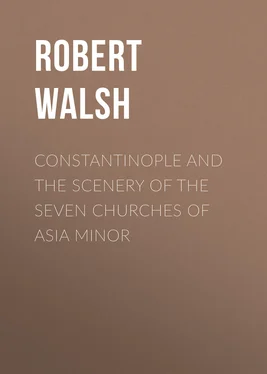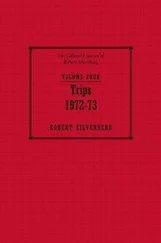Robert Walsh - Constantinople and the Scenery of the Seven Churches of Asia Minor
Здесь есть возможность читать онлайн «Robert Walsh - Constantinople and the Scenery of the Seven Churches of Asia Minor» — ознакомительный отрывок электронной книги совершенно бесплатно, а после прочтения отрывка купить полную версию. В некоторых случаях можно слушать аудио, скачать через торрент в формате fb2 и присутствует краткое содержание. Жанр: foreign_prose, foreign_home, История, foreign_antique, на английском языке. Описание произведения, (предисловие) а так же отзывы посетителей доступны на портале библиотеки ЛибКат.
- Название:Constantinople and the Scenery of the Seven Churches of Asia Minor
- Автор:
- Жанр:
- Год:неизвестен
- ISBN:нет данных
- Рейтинг книги:5 / 5. Голосов: 1
-
Избранное:Добавить в избранное
- Отзывы:
-
Ваша оценка:
- 100
- 1
- 2
- 3
- 4
- 5
Constantinople and the Scenery of the Seven Churches of Asia Minor: краткое содержание, описание и аннотация
Предлагаем к чтению аннотацию, описание, краткое содержание или предисловие (зависит от того, что написал сам автор книги «Constantinople and the Scenery of the Seven Churches of Asia Minor»). Если вы не нашли необходимую информацию о книге — напишите в комментариях, мы постараемся отыскать её.
Constantinople and the Scenery of the Seven Churches of Asia Minor — читать онлайн ознакомительный отрывок
Ниже представлен текст книги, разбитый по страницам. Система сохранения места последней прочитанной страницы, позволяет с удобством читать онлайн бесплатно книгу «Constantinople and the Scenery of the Seven Churches of Asia Minor», без необходимости каждый раз заново искать на чём Вы остановились. Поставьте закладку, и сможете в любой момент перейти на страницу, на которой закончили чтение.
Интервал:
Закладка:
Romanus III., (Argyrus,) succeeded to the empire in 1028, and was put to death by his wife Zoe in 1034. She had administered slow poison, but, impatient of its operation, caused him to be suffocated in a bath by an eunuch, who held his head under water.
Michael IV., (Paphlagonicus,) was born in Paphlagonia, crowned in 1034, and afterwards retired to a monastery in 1041. He married Zoe after the assassination of her former husband, and his death was hastened by never-ceasing remorse. The first schism commenced in this reign between the Greek and Latin churches.
Michael V., (Calaphates,) was crowned in 1041, and was put to death the same year, after a reign of four months. He was called Calaphates because his trade had been careening boats.
Zoe & Theodora, (the Matrons,) were crowned in 1042. They were taken at an advanced age, one from a prison, and the other from a monastery. Zoe, at the age of sixty, took a third husband, and died in 1050.
Flavius Constantinus X., (Monomachus,) was crowned in 1042. He was called Monomachus from his bravery in single combat. He died in 1055, having survived his atrocious wife Zoe two years. In his reign the Turks first entered the territories of the Greek empire in Asia.
Theodora was crowned sole empress in 1055, at the age of seventy-six, and reigned one year and ten months. She took an associate, and thus for twenty years two feeble sisters, and one an abandoned profligate, nominated whom they pleased to the empire.
Michael VI., (Stratioticus,) was crowned in 1056, and resigned the year after. He obtained the name of Stratioticus from his supposed skill in war. His aged and feeble associate died just before, the last of the Basilian dynasty.
Family of the Comneni
Isaak I., (Comnenus,) was crowned in 1057, and resigned in 1059. The name of Comnenus is one of the most distinguished of the Lower Empire.
Family of Ducas
Flavius Constantinus XI., (by some IX.) (Ducas,) was crowned in 1060, and died a natural death in 1066. During his reign Jerusalem was taken by the Turks and Saracens, William the Conqueror entered England, and the Norman dynasty began.
Eudocia was crowned in 1067, on the death of her husband, and reigned alone but one year. She was expelled from the palace, and lingered in obscurity till the time of Anna Comnena, who saw her alive in 1096.
Romanus IV., (Diogenes,) was crowned in 1068, and was killed in 1071. He had married Eudocia, and was nominated to the crown in prejudice of her sons. He was taken prisoner by the Turks, who scooped out his eyes; of which he died, covered with worms, and in extreme misery.
Michael VII.,(Parapinace,) crowned in 1071, and resigned in 1078, and retired to a monastery. He was called Parapinace because he had suffered the bushel of corn to be reduced to the size of a quart. He associated his two brothers with him in the empire, under the names of Andronicus I. and Constantine XII.
Nicephorus III., (Botoniates,) was crowned 1078: he resigned in 1081, and entered a monastery. In his reign, Doomsday Book began to be compiled in England, to ascertain the tenure of estates.
Restoration of the Family of Comnenus
Alexius I., (Comnenus,) was crowned in 1081, and died in 1118. He lived to the age of seventy-one, and reigned thirty-seven. His daughter, Anna Comnena, illustrated this era by her writings. The history of her father’s eventful reign is yet extant. In England, William Rufus and Henry I. were his contemporaries, and the first crusade commenced. Johannes II., (Comnenus,) Kalojohannes, began his reign in 1118, and died in 1143, of the wound of a poisoned arrow, accidentally inflicted by himself. He obtained the name of Kalojohannes for his personal beauty. His contemporary in England was Stephen.
Manuel I., (Comnenus,) was crowned in 1143, and died in 1180. In his reign the canon law was drawn up, and the second crusade commenced.
Alexius II., (Comnenus,) was crowned in 1180, and died in 1183. He was murdered by his successor Andronicus.
Andronicus I., (Comnenus,) was crowned in 1183, and died in 1185. He was cruelly put to death, also, by his successor, who caused his eyes to be put out, and his hands cut off, and then led him through the city, seated on a camel, when he was torn in pieces by the multitude.
Isaak II., (Angelus,) was crowned in 1185, and in 1195 his eyes were put out. In his reign the third crusade commenced. His contemporary in England was Richard I.
Alexius III., (Angelus) was crowned in 1195, and died in 1204. The deposition of his brother Isaak was the pretext to the Crusaders for the sack of Constantinople.
Isaak III., Alexius IV., Alexius V., (Ducas Mourzoufle,) 1203. In six months, five emperors were crowned at Constantinople; three were murdered, and two fled. Mourzoufle (so called from his dark eyebrows) was cast from the monument of Theodosius. The Crusaders took and sacked the city, and the empire was partitioned: Lascaris obtained Nicæa and Bythinia; Alexius, Trebisond; and Michael, Epirus.
Frank Family
Baldwin I., (Robert,) crowned in 1204. He was drawn into an ambush by the Greeks and Bulgarians, by whom some say he was cut to pieces. He never afterwards appeared. Aristotle’s works were now first brought from Constantinople, Ghengis Khan reigned in Tartary, and Magna Charta was extorted from king John in England.
Henry was called to the throne on the supposed death of his brother in 1206, and reigned 10 years.
Baldwin II. was crowned in 1228; deposed in 1261. He fled to Italy. The Latin dynasty was extinguished, and the Greek restored. The Inquisition was established in the Latin church. Henry III. reigned in England.
Family of the Palæologi
Michael VIII., (Palæologus) crowned in 1262; died in 1283. He was regent during the minority of John Lascaris, whom he put to death. He endeavoured to effect an union between the Greek and Latin churches without success. The Mamelukes now seized on Egypt. Edward I. reigned in England.
Andronicus II., (Palæologus,) was crowned in 1283, and abdicated in 1328. He retired to a monastery, where he lived to the age of seventy-four. The Turks seized on Bythinia, and Othman established his capital at Brusa. From him they are since called Ottomans, or Osmanli. Edward II. reigned in England.
Andronicus III., (Palæologus,) crowned in 1328, having deposed his grandfather, with whom he had been associated. He died of an irregular life in 1341. Edward III. reigned in England.
Johannes III., (Cantacuzene,) was crowned in 1342, and abdicated in 1355. He retired, with his wife, to a monastery, where he lived till 1411. He there composed the “History of his own Time,” which is still extant. In his reign the Turks first entered Europe.
Johannes IV., (Palæologus,) was crowned on his father Andronicus’s death, in 1341, and died in 1391. In his reign Amurath took Adrianople, and established a capital in Europe. Richard II. reigned in England.
Manuel II., (Palæologus,) was crowned sole emperor in 1391, and died in 1425. In his reign, Bajazet laid siege to Constantinople, which was raised by Tamerlane. Henry IV. and Henry V. reigned in England.
Johannes V., (Palæologus,) crowned sole emperor in 1425, and died of the gout in 1448. In his reign the art of printing was first discovered in Europe. Henry VI. was his contemporary of England.
Constantinus XIII., by some XI., (Palæologus,) was crowned in 1448, and killed in 1453. Mohammed took the city of Constantinople, and put an end to the Greek empire. Constantine had two brothers−Demetrius, who basely submitted to slavery, and permitted his daughter to be received into the conqueror’s harem; and Thonas, who made vigorous efforts to rescue Greece from the Ottoman power. He finally retired to Italy. His children proceeded to England, where he died: and the ashes of the last of the family of the Greek dynasty repose among the free in Britain, where their monument is still to be seen in Llanulph Church in Cornwall. It is remarkable, that the first Christian emperor of the East was born, and the descendants of the last, repose in England.
Читать дальшеИнтервал:
Закладка:
Похожие книги на «Constantinople and the Scenery of the Seven Churches of Asia Minor»
Представляем Вашему вниманию похожие книги на «Constantinople and the Scenery of the Seven Churches of Asia Minor» списком для выбора. Мы отобрали схожую по названию и смыслу литературу в надежде предоставить читателям больше вариантов отыскать новые, интересные, ещё непрочитанные произведения.
Обсуждение, отзывы о книге «Constantinople and the Scenery of the Seven Churches of Asia Minor» и просто собственные мнения читателей. Оставьте ваши комментарии, напишите, что Вы думаете о произведении, его смысле или главных героях. Укажите что конкретно понравилось, а что нет, и почему Вы так считаете.












